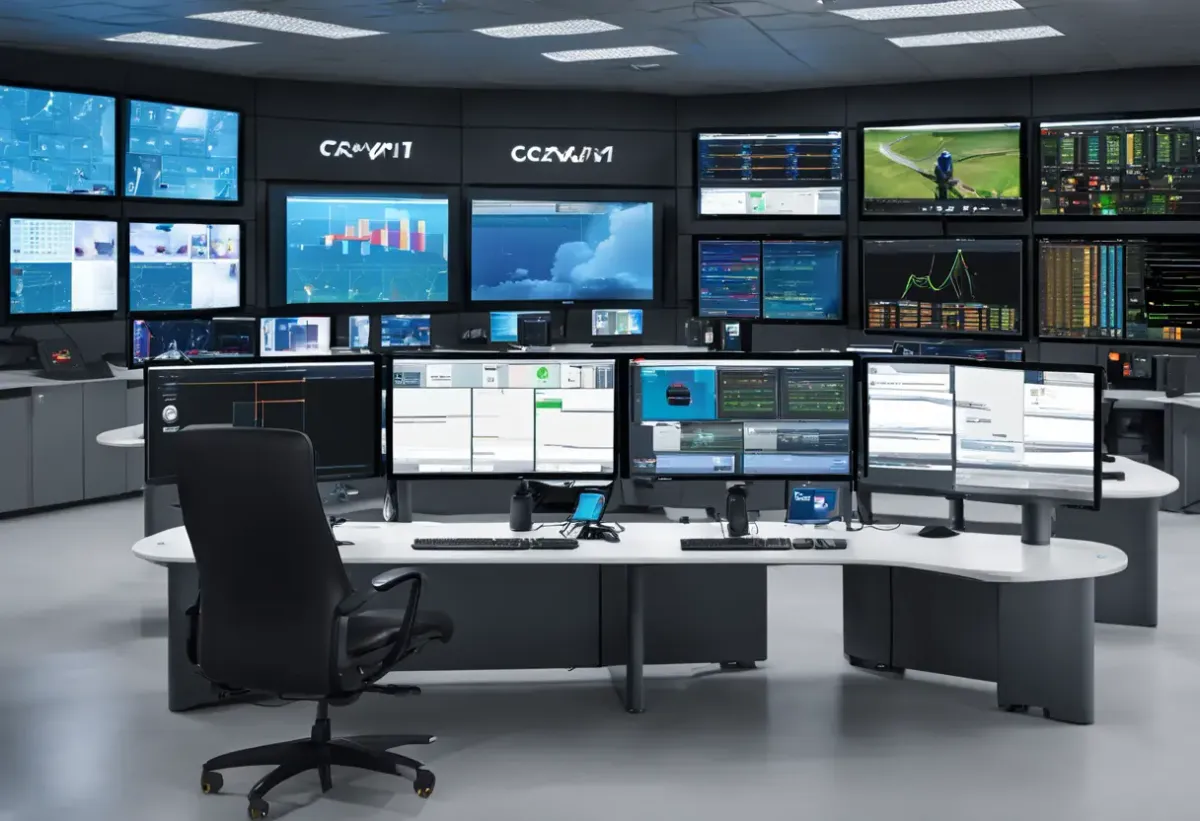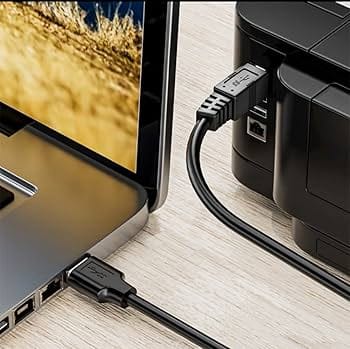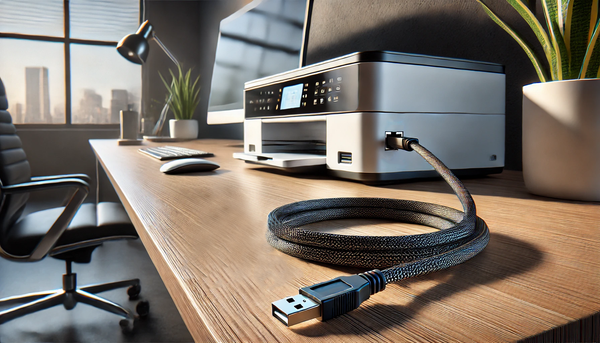Integrating Security Camera Cloud Services: Strategies for Safe and Seamless Deployment

Introduction to Security Camera Cloud Services
Security camera cloud services have become an indispensable tool in modern surveillance and security strategies. With the advent of cloud computing, camera systems can now stream live footage to remote servers, where the data is stored, processed, and managed through cloud-based software platforms. This shift to the cloud offers scalability, flexibility, and accessibility previously unattainable with traditional, local storage solutions.
Organizations opting for cloud services typically encounter several key benefits:
- Remote Accessibility: Users can access footage from any location with internet connectivity, allowing for real-time monitoring and responsiveness.
- Scalability: Camera systems can be easily expanded by adding more cameras without the need for significant infrastructure investment.
- Cost-Effectiveness: Cloud services often follow a subscription model, eliminating the need for substantial upfront hardware costs and reducing the burden of in-house server maintenance.
- Integration Capability: Modern cloud services offer integration with other security systems and business applications, providing a comprehensive security and analytics solution.
- Data Security and Compliance: Reputable cloud service providers deploy robust encryption and security protocols to protect data, supporting compliance with legal and regulatory standards.
Before integrating security camera cloud services, it’s crucial to formulate a strategy that prioritizes data security, network stability, and operational continuity. A thorough risk assessment should address potential cybersecurity threats and data privacy concerns while ensuring the chosen solution meets the organization’s specific security needs.
The implementation process necessitates a methodical approach that involves:
- Selecting a reputable cloud service provider with robust security measures.
- Ensuring network infrastructure can handle the additional load of video data transmission.
- Training staff on the new system’s operations and security protocols.
By understanding the foundational aspects and strategic considerations, organizations can pave the way for a secure and seamless transition to security camera cloud services.
Evaluating the Need for Cloud-Based Surveillance
When considering integrating cloud-based surveillance into security protocols, organizations must assess various factors to determine the need for such technology. The evaluation process typically involves a comprehensive analysis of many aspects including:
- Scalability Requirements: Organizations planning to expand their geographical footprint or expecting an increase in surveillance demands should contemplate cloud solutions. Cloud infrastructure can effortlessly adjust to growing data storage needs, which is paramount for future-proofing security systems.
- Accessibility and Collaboration: If remote monitoring is crucial, cloud-based surveillance enables stakeholders to access live and recorded footage from any location with internet access. This fosters better collaboration among security teams, management, and law enforcement agencies.
- Cost Implications: Assess the financial impact of migrating to a cloud setup. While upfront investments may be lower due to reduced hardware requirements, recurring costs related to service subscriptions and data storage need careful consideration.
- Data Redundancy and Recovery: The priority given to disaster recovery and data protection is vital. Cloud-based systems usually offer robust backup and recovery solutions, ensuring surveillance footage is protected against hardware failures and other catastrophic events.
- Compliance and Regulatory Considerations: With data privacy regulations becoming increasingly stringent, it’s mandatory to understand how cloud storage aligns with industry-specific compliance standards. Proper evaluation guarantees that surveillance practices adhere to legal frameworks.
- Integration with Existing Systems: Compatibility with current security infrastructure is crucial. Organizations must examine whether cloud services can be seamlessly integrated without disrupting existing surveillance and security measures.
In conclusion, a thorough analysis in these areas helps determine the suitability of cloud-based surveillance for an organization’s specific needs, ensuring that the move to the cloud enhances security operations rather than introduces new complexities or vulnerabilities.
Understanding Cloud Service Models: IaaS, PaaS, and SaaS
When considering the integration of security camera cloud services, it is crucial to understand the foundational cloud service models, each with its own set of advantages and responsibilities. These models are Infrastructure as a Service (IaaS), Platform as a Service (PaaS), and Software as a Service (SaaS).
- Infrastructure as a Service (IaaS):
- Provides virtualized computing resources over the internet.
- Users get access to storage, networking, and virtual servers, having control over their own data center without the physical management.
- IaaS is beneficial for organizations that require customization at the infrastructure level but prefer not to invest in physical hardware.
- Platform as a Service (PaaS):
- PaaS is the middle ground between IaaS and SaaS. It provides a platform allowing customers to develop, run, and manage applications without the complexity of building and maintaining the infrastructure typically associated with developing and launching an app.
- This model is suitable for businesses that prioritize application development without the burden of maintaining the underlying servers and software.
- Software as a Service (SaaS):
- SaaS delivers software applications over the internet, on a subscription basis.
- Customers access applications through a web browser, which are maintained by the service provider.
- SaaS is ideal for businesses looking for out-of-the-box software solutions that are ready to use without the need for technical hardware or platform management.
Understanding these models is fundamental when choosing the right cloud service for security camera deployments. Each model offers a different level of control, from foundational infrastructure to comprehensive software solutions. Integrating security camera cloud services necessitates a clear comprehension of the desired control level versus the trade-offs in client-side management responsibilities.
Choosing the Right Cloud Service Provider for Security Cameras
When integrating cloud services with security cameras, selecting a provider that ensures robust data protection and system reliability is crucial. Here are key considerations for choosing the right cloud service provider:
- Compliance and Certifications: The provider should adhere to industry standards and regulations such as GDPR, HIPAA, or CCPA, and possess certifications like ISO 27001, which demonstrate a commitment to security.
- Encryption and Data Protection: Ascertain that the provider employs strong encryption for data at rest and in transit. AES 256-bit encryption is often recommended for securing video data.
- Availability and Reliability: Examine the service level agreement (SLA) for the provider’s uptime guarantees. A 99.999% uptime, also known as the “five nines”, is a mark of high reliability.
- Access Control and Authentication: The provider should offer robust access control mechanisms, including multi-factor authentication and role-based access to ensure only authorized users can access camera feeds and recordings.
- Network Security: Inquire about the provider’s network security measures, such as firewalls, intrusion detection systems, and regular security audits to protect against external threats.
- Local vs. Cloud Storage Options: Consider whether the provider offers hybrid storage options that combine both local and cloud storage, which can offer redundancy and quicker access to video data when needed.
- Customer Support: Evaluate the provider’s customer support services. Quick and competent support is necessary for addressing any potential security issues promptly.
- Cost-Effectiveness: While security should never be compromised for cost, it is important to choose a provider that offers a scalable pricing model that fits the organization’s budget and scale of operations.
By meticulously vetting potential cloud service providers against these criteria, organizations can establish a secure and resilient cloud infrastructure for their security cameras, safeguarding their assets and maintaining peace of mind.
Data Security Considerations in Cloud Implementations
When integrating security camera services with cloud solutions, organizations must meticulously consider data security to ensure the protection of sensitive video feeds and related information. It is critical to address several key areas to maintain robust security protocols:
- Data Encryption: All data transmitted to and from cloud services should be encrypted. This includes both in-transit (such as SSL/TLS protocols) and at-rest encryption. Advanced encryption standards, like AES-256, are recommended to prevent unauthorized access.
- Access Controls: Define strict access policies and permissions for users interacting with the cloud service. Utilize identity and access management (IAM) solutions to administer user access to data and services based on the principle of least privilege.
- Network Security: Secure the network infrastructure by implementing firewalls, intrusion detection systems (IDS), and intrusion prevention systems (IPS) to monitor and protect network traffic. Virtual Private Networks (VPNs) should also be employed for remote access to ensure a secure communication channel.
- Compliance and Standards: Ensure the cloud service provider adheres to relevant industry standards and compliance requirements such as ISO 27001, SOC 2, or GDPR. Remaining compliant helps to prevent legal implications and guarantees a minimum security benchmark.
- Regular Audits and Monitoring: Perform regular security audits of the cloud environment to detect potential vulnerabilities. Incorporate continuous monitoring tools to track abnormal activities or potential breaches in real-time, allowing for immediate response.
- Data Residency and Sovereignty: Understand and comply with data residency and sovereignty laws that dictate where and how data can be stored and transferred, especially important for multi-national deployments.
- Vendor Risk Management: Conduct thorough due diligence on the cloud service provider. This should include reviewing their security posture, incident response history, and ensuring that they have an adequate security response plan.
Security considerations in cloud implementations are not limited to the ones listed above but serve as a foundational guideline. Ensuring a detailed and well-structured approach to data security will foster a safe and seamless integration of security camera cloud services.
Bandwidth and Storage: Planning for Scalability
When integrating security camera cloud services, it’s imperative to consider future growth and adaptability. As organizations expand, the amount of data and the required bandwidth to transfer this data efficiently can increase significantly.
- Assessment of Current and Future Needs: Begin by evaluating both current and anticipated needs. How many cameras are in use, and what is the quality of the footage they capture? It’s important to calculate the data output of each security camera and then project future requirements based on growth plans.
- Bandwidth Requirements: High-definition video consumes a sizable amount of bandwidth. If multiple cameras are streaming simultaneously, the cumulative bandwidth could overwhelm an unprepared network. Thus, it is necessary to ensure that both the internal network and the internet service provider can handle the peak loads without disrupting other business operations.
- Data Retention Policies: Establish clear data retention policies that comply with legal requirements and business needs. These policies will dictate the amount of storage required, influencing the scalability plan.
- Cloud Storage Solutions: Opting for a cloud service that offers scalable storage options allows for a smooth transition as requirements grow. Many cloud providers offer pay-as-you-go models that enable organizations to increase storage without significant upfront costs.
- Optimization Techniques: Consider strategies to optimize data usage, such as motion detection recording, which only stores video when movement is detected, and video compression technologies, which reduce file size without compromising on quality.
Proper planning for bandwidth and storage will not only ensure seamless operations but also provide cost-efficiency. Failing to adequately prepare for scalability can lead to unnecessary expenses, limitations on expansion, and potential system failures. It is crucial to work with cloud service providers that understand the importance of scalability to ensure the longevity and reliability of the security camera system.
Compliance and Legal Aspects of Cloud-Hosted Security Footage
When integrating security camera cloud services, compliance and legal considerations are as important as the technological aspects. Many regions have stringent data protection laws, such as the General Data Protection Regulation (GDPR) in the EU, which require organizations to handle personal data, including video footage, with the utmost care. Here is a breakdown of considerations for compliance and legal aspects:
- Data Protection Regulations: Ensure that the cloud service provider adheres to relevant data protection laws. For instance, they must implement measures to protect personal data from unauthorized access, accidental loss, or damage.
- Data Storage Location: Be aware of where the cloud service stores the security footage. Some regulations mandate that data must be stored within certain geographical boundaries.
- Retention Policies: Comply with legal requirements regarding the length of time security footage can be stored. Long-term storage may require special justification under data protection laws.
- Access Control and Audit Trails: Maintain rigorous access control to the cloud-stored footage. Establish clear audit trails showing who accesses the data and why, which is crucial for legal accountability.
- Encryption Standards: Ensure that the cloud provider uses strong encryption both for footage at-rest and in-transit to prevent unauthorized interception and viewing.
- Notification of Data Breaches: Understand the service provider’s policies on breach notification. Ensure that there are processes in place to notify authorities and affected individuals in the event of a data breach.
- Contractual Terms with the Provider: The contractual agreement with the cloud service provider should clearly define responsibilities, including data handling, security measures, and what happens to the data if the agreement is terminated.
- User Consent: If the cameras are located in areas where individuals expect privacy, it is important to obtain consent from those being recorded, or at least provide clear notification about the presence of cameras.
- Regular Compliance Reviews and Audits: Conduct periodic audits to ensure ongoing compliance with all legal requirements, adapting to any changes in legislation.
Failure to comply with the associated legal framework can lead to penalties and damage to an organization’s reputation. Therefore, businesses must carefully consider these legal complexities when setting up cloud-based security camera systems.
Implementing Robust Authentication and Access Control
To ensure the security of cloud-based security camera systems, robust authentication and access control are paramount. These measures prevent unauthorized access and ensure that only designated persons can view or manipulate surveillance data.
Authentication Mechanisms
Authentication mechanisms must be strong enough to withstand various attack vectors. Utilizing multi-factor authentication (MFA) adds an extra layer of security beyond traditional username and password combinations. For instance:
- Passwords should be complex and regularly updated.
- Biometrics can provide a unique and non-transferable form of authentication.
- Hardware tokens generate a one-time passcode, enhancing security.
- SMS or Email codes, although less secure, can still offer a reasonable level of protection if implemented correctly.
Access Control Strategies
Effective access control ensures that users only have access to the data and system functionality necessary for their role. A few strategies include:
- Role-Based Access Control (RBAC) assigns permissions to roles rather than individuals, simplifying the management of access rights.
- Attribute-Based Access Control (ABAC) allows for dynamic permissions based on a set of attributes, such as time of day, location, or device type.
- Least Privilege Principle ensures users only have the minimum level of access required for their tasks.
Encryption and Security Protocols
Incorporating strong encryption and security protocols into authentication and access control systems provides an additional defense layer:
- TLS (Transport Layer Security) encrypts data in transit between user devices and cloud services.
- AES (Advanced Encryption Standard) can secure data at rest, ensuring that stored footage is inaccessible to intruders.
As part of a comprehensive security strategy, these measures demand regular audits and updates. Systems must evolve to counter emerging threats, ensuring the enduring protection of surveillance data within cloud services.
The Role of Encryption in Protecting Video Data
Encryption is a vital component of digital security, especially in the context of video data transmitted or stored by security camera cloud services. As such, its role is multifaceted and critical in preserving confidentiality, integrity, and the availability of video data.
When a security camera records footage, that data is at risk of unauthorized access during transmission to cloud storage or while it is stored on remote servers. Encryption mitigates these risks in several ways:
- Data in Transit: As video data travels from security cameras to cloud services, encryption protects it from potential interception. Transport Layer Security (TLS) is often employed to ensure that video feeds are encrypted, thereby safeguarding against eavesdropping and man-in-the-middle attacks.
- Data at Rest: When video data resides on cloud storage servers, encryption serves to shield it from unauthorized access. Even if a server is compromised, encrypted files will remain unintelligible without the proper decryption keys.
- Key Management: The security of encrypted video data relies heavily on rigorous key management practices. Encryption keys must be securely generated, stored, and exchanged, with access tightly controlled and monitored.
Moreover, encryption standards have evolved to address the demanding needs of video data security. Advanced Encryption Standard (AES) is widely regarded for its balance of performance and robust security, providing strong protection for video data without excessively taxing system resources.
Implementing encryption requires attention to:
- Compliance Standards: Adherence to industry regulations, such as GDPR or HIPAA, may dictate specific encryption protocols.
- Performance: Encryption can be resource-intensive, so ensuring that the selected encryption mechanism does not impair the functionality or performance of security systems is crucial.
- End-to-End Security: A comprehensive security strategy includes not only encryption but also other measures such as secure authentication, regular updates, and physical security controls.
Ultimately, the integration of robust encryption methods within security camera cloud services ensures that sensitive video data remains protected from unauthorized access and exposure, preserving both privacy and trust.
Integrating Cloud Services with Existing Security Infrastructure
When organizations decide to integrate cloud services with their existing security infrastructure, careful planning and strategic execution are crucial to ensure a safe and seamless deployment. The following strategies can guide this integration process:
- Assessment of Current Infrastructure: Begin with a thorough assessment of the current security infrastructure. Identify any legacy systems, assess their compatibility with cloud services, and determine any required upgrades or replacements.
- Choosing the Right Cloud Service Provider: Select a cloud service provider that offers robust security features and complies with industry-standard regulations. Evaluate their encryption methods, data centers’ physical security, and adherence to privacy standards.
- Develop a Phased Implementation Plan: Avoid a full-scale transition. Instead, create a phased plan that allows for incremental integration. Test each phase thoroughly before moving on to the next, ensuring the new cloud solutions work cohesively with existing systems.
- Establish Clear Access Controls: Implement strict access controls and identity management protocols. Only authorized personnel should have access to security camera feeds and stored video footage to maintain privacy and security.
- Regular Security Updates and Patches: Work with the cloud provider to ensure regular updates and patches are applied to the security infrastructure. This measure is vital for protecting against evolving cyber threats.
- Data Encryption: Ensure that all data transmitted to and from the cloud is encrypted. It’s critical for the protection of video feeds during transmission and when stored in the cloud.
- Redundancy and Reliability: Verify that the cloud provider offers redundant storage and has a reliable disaster recovery plan. This preparedness is essential should any part of the security infrastructure fail.
Integrating cloud services with existing security infrastructure demands attention to detail, adherence to security protocols, and continuous collaboration with the chosen cloud service provider. With these strategies in place, organizations can enhance their security measures while maintaining the integrity and reliability of their overall security system.
Cloud Redundancy and Failover Mechanisms for Continuous Monitoring
Ensuring continuous operation of security camera systems is a critical requirement for safety and security. Cloud redundancy and failover mechanisms play a vital role in achieving high availability and preventing data loss during unexpected outages.
- Implementation of Redundancy: To maintain service continuity, security camera cloud services integrate redundancy at different levels, including data storage, network connectivity, and power supply. Data is often replicated across multiple data centers, ensuring that a failure in one center does not result in data loss. Furthermore, redundant network paths and power supplies guarantee that the system remains operational even if one path or source fails.
- Automatic Failover Processes: Failover is the automatic switching to a redundant or standby system upon the failure of the currently active system. Security camera cloud services incorporate automatic failover to immediately reroute data and processing to backup systems without manual intervention, minimizing downtime.
- Geographic Distribution of Data Centers: By distributing data centers geographically, cloud services mitigate the risk of natural disasters or localized power outages affecting all systems at once. Geographic diversity ensures that if one location suffers a disrupter, other locations can seamlessly take over.
- Regular Testing of Failover Mechanisms: Reliable failover mechanisms require regular testing to ensure they operate as expected during an actual failure. Cloud service providers often conduct scheduled failover drills to verify the effectiveness of their failover processes and to train staff on emergency procedures.
- Monitoring and Alerts: Continuous monitoring of system health and performance allows for the early detection of potential issues before they escalate into failures. Automated alerts notify administrators of anomalies or degradations in service, enabling swift corrective actions.
By leveraging these strategies, security camera cloud services ensure that surveillance operations are robust, enduring, and resilient against disruptions, thereby protecting assets and ensuring a secure environment around the clock.
Best Practices for Monitoring and Maintaining Cloud Security Systems
Ensuring the security of cloud-based security camera systems is crucial for protecting both the physical and digital integrity of the monitored spaces. The following best practices provide guidance on maintaining robust cloud security systems.
- Continuous Monitoring: Implement real-time security monitoring to instantly detect and respond to potential threats. This includes regular checks for unusual activity within the network such as unexpected data flows or unauthorized access attempts.
- Regular Updates and Patches: Keep the cloud security system, including the software and firmware for cameras and connected devices, up to date with the latest security patches. This minimizes vulnerabilities that could be exploited by attackers.
- Strong Authentication Measures: Utilize multi-factor authentication (MFA) for accessing the cloud environment. This adds an additional layer of security beyond just a password, making unauthorized access significantly more difficult.
- Data Encryption: Encrypt sensitive data, both at rest and in transit, to protect against eavesdropping and ensure privacy. Use strong encryption standards like AES 256-bit to secure the transmission of video data.
- Access Control Policies: Establish strict access control policies to limit who can view and manage the camera feeds and associated data. Regularly review permissions to ensure that only authorized personnel have access.
- Incident Response Plan: Develop and regularly update an incident response plan to quickly address any security breaches. The plan should include steps for containment, eradication, recovery, and post-incident analysis.
- Regular Security Audits: Conduct periodic security audits to identify and mitigate risks. These audits should assess both the technical aspects of the cloud infrastructure and operational procedures.
- User Education and Awareness: Train users on the importance of security practices, such as recognizing phishing attempts and reporting suspicious activities. A well-informed user is an essential defense against security threats.
By integrating these best practices into the regular operation of cloud security systems, organizations can achieve a high level of security that protects against both traditional and emergent threats.
Preparing for Future Expansion and Technological Advancements
When integrating security camera cloud services, organizations must plan not only for their current needs but also for future growth and technological shifts. To start, scalability should be a core feature of any selected cloud service. The infrastructure should be able to handle increasing amounts of data and a rising number of cameras without substantial changes or downtime.
- Embrace modular design in the deployment of cloud infrastructure, enabling easy augmentation of storage and processing capabilities.
- Choose cloud providers that consistently update and upgrade their services to keep up with the latest security protocols and technologies.
- Prioritize compatibility with a range of camera types and brands to avoid vendor lock-in, giving the flexibility to incorporate the latest camera technologies as they emerge.
- Explore the use of artificial intelligence and machine learning within the cloud service, ensuring that your system will be able to adapt and make use of these advancements for improved security analytics and threat detection.
Moreover, consider the adaptability of the system concerning the integration of new technologies. IoT and 5G are prime examples that will likely impact how security camera cloud services operate, potentially introducing faster data transmission rates and increased connectivity options.
- Formulate a technology roadmap that anticipates key trends and outlines a pathway for the adoption of new features and standards.
- Stay abreast with industry advancements through continuous education, partnerships, and attendance at conferences, ensuring the organization remains informed about emerging technologies.
By approaching security camera cloud integration with an eye on the future, organizations can ensure a resilient, versatile, and cutting-edge security system that provides long-term value and security.
Migration Strategies: Moving from On-Premises to Cloud-based Cameras
When transitioning from traditional on-premises to cloud-based camera systems, organizations should consider a variety of strategies to ensure a smooth migration. Here is a step-by-step approach to assist in this complex process:
- Assessment and Planning
Begin by conducting a thorough inventory of your current surveillance infrastructure. Assess which areas will benefit most from cloud-based technology and identify any potential integration challenges. Plan the migration in phases to minimize disruption to your security operations.
- Choosing the Right Cloud Provider
Selecting a provider is critical. Look for a cloud service that offers high levels of security, reliability, and compliance with industry regulations. Additionally, the provider should have a proven track record in the industry and offer scalability to match your organization’s growth.
- Data Security and Privacy
The protection of video data is paramount. Ensure that the cloud service offers robust encryption both in transit and at rest. Familiarize yourself with the provider’s data policies and confirm that they align with your organization’s privacy requirements.
- Bandwidth Management
Cloud-based cameras send video data over the internet which can consume significant bandwidth. It is important to evaluate your current network capacity and potentially upgrade to accommodate the increased load. Consider using cameras with edge processing and compression capabilities to reduce bandwidth requirements.
- Testing Phase
Implement a pilot program before full-scale deployment. This allows for the identification and resolution of any issues in a controlled environment. Use this phase to train staff and make any necessary adjustments to workflows.
- Ongoing Management and Support
After the migration, establish a process for monitoring system performance and managing updates. Ensure that you have access to reliable customer support from the provider to address any future challenges promptly.
By following these steps, organizations can successfully migrate to cloud-based camera systems with confidence, ensuring enhanced security and efficiency in their surveillance operations.
Conclusion: Embracing the Cloud While Ensuring Security and Privacy
As organizations navigate the intricate process of incorporating cloud services for their security camera systems, a balance must be achieved that maximizes the potential of cloud computing without compromising security and privacy. To this end, companies must ensure that they have robust security protocols in place that are tailored to cloud-based operations.
- Establishing multi-layered security measures is crucial. These can include encryption, firewalls, and intrusion detection systems that work in unison to protect data.
- Implementing stringent access controls is essential. Only authorized personnel should have access to sensitive footage, and such access should be logged and monitored.
- Regular audits of cloud services provide insight and help in identifying potential vulnerabilities that may be exploited by cyber threats.
- Compliance with legal and regulatory standards should never be overlooked. Keeping abreast of any changes in privacy laws helps in maintaining compliance.
Furthermore, educating employees about data privacy, the risks involving cloud services, and the policies in place to mitigate those risks increases the overall security posture. As part of an ongoing commitment, continuous evaluation and adaptation of security strategies ensure that the systems remain resilient against evolving threats.
Investing in a trusted cloud service provider is also a key step. Such a provider typically offers high-end security features, regular software updates, and dedicated support to troubleshoot any issues that may arise. Selecting a provider that aligns with an organization’s specific security requirements fosters a safer cloud environment.
Ultimately, the move to integrate security camera cloud services should not be met with trepidation but embraced as an opportunity. With persistent vigilance and a comprehensive security strategy, organizations can reap the benefits of cloud innovation while safeguarding their assets and maintaining consumer trust.




